the primary grammar of oil,
Basic Elements
The Shot - Affects our emotional and psychological relationship with character and setting through composition and speed.
Movement - Affects our emotional and psychological relationship with character and setting through changes in visual space and action.
Why Do we use shots?
The Basic Building blocks of visual grammar.
The visual equivalent of sentence structure.
If shots are words, mise en scene is meaning and editing is narrative structure.
The Basic shots
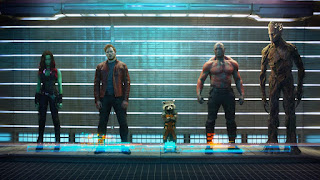 Wide Shot - Establish location, setting or character context in setting - convey sense of place and context, can also convey character relations ships to the environment or their social relationships.
Wide Shot - Establish location, setting or character context in setting - convey sense of place and context, can also convey character relations ships to the environment or their social relationships.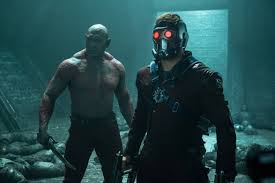 Medium Shot - Characters dominate the frame - Focuses viewers attention on one or more principal characters, commonly used for dialogue scenes.
Medium Shot - Characters dominate the frame - Focuses viewers attention on one or more principal characters, commonly used for dialogue scenes.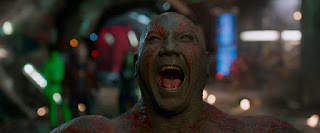
Close Up - Face or specific object dominate the frame - Conveys intimacy and emotion, often used for interior monologues voiceover or speaking directly to camera.
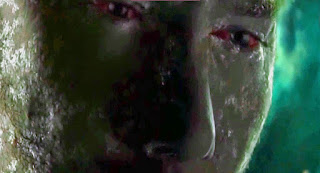
Extreme Close Up - selected part of the character or object fills the frame. - Conveys heightened emotion (fear,suspense, desire) Dramatic tension or a reveal.
GVS - General Views, Cover shots, Est shots.
The size of the image is important to the emotion, particular when yore using that image to have the audience identify with it. Alfred Hitchcock
Rule of thirds - subject placed at aesthetic intersections.
Derived from the golden mean - classical concept of natures balance and harmony reflected in art.
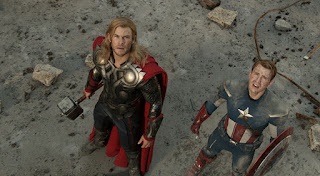
High Angle Shot - Objective alienating, diminishes character or subject in frame emphasising venerability or isolation.
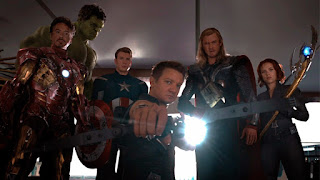
Low Angle Shot - Empahsises character or subjects dominance in frame often used for hero shot or menace.
Dutch/Tilt - disorienting, creates psychological tension.
Expressionism - angled shots are a common feature of exp partially in the classic german expressionist films.
presents the world from a subjective perspective, distorting it radically for emotional effect in order to evoke moods or ideas. Artists sought to express the meaning of emotional experience rather than physical reality.
Speed -
Slow-motion/Fast Motion - Alters audiences perceptual or emotional response to dramatic action.
(300)
Motion & Emotion
To heighten action or emotion
To convey objective or subjective viewpoints
Refocus the audiences attention within the scene
Explore or change the setting/enviroment.
I believe in using camera movement when it helps tell the story more effectively, i think one of the essentials of moving camera is the audience should not be aware of it. - Alfred Hitchcock.
Alienation - Hitchcock's use of the reverse crane shot is an example of alienation effect.
Is the extent to which one maintains a critical distance from a cultural production. The more immersive a piece, the greater the extent to which one is drawn into the fictional piece, often associated with passively experiencing the media.
Contrastingly an alienated audience remains removed from the media, critically considering the signs, narrative and so on. This is often considered in relation to artifice, with alienated media not attempting to hide the constructed and artificial nature of the production; showing scaffolding using minimal staging etc.
Camera Movements
Pan.tilt, zoom
Handheld, steady cam
Dolly,Crane
increases action and emotion through subjective POV
Switches between subjective and objective viewpoints.
Denotative (directing attention)
Expressive (bringing out feelings)
Decorative ( Flourishes or stylistic patterns that are independent or semi-independent of narrative design)
Symbolic functions (Invoking abstract concepts)
Uses of handheld in documentary
heightens action and emotion (conveys urgency)
Dynamics of transition (moving from one place to another)
Places character in context ( Life on the streets) Authenticity
EDITING
what editing is and how it serves narrative
different schools of editing and theories of editing
use of ending in cinema, television, and documentary
The assembly of visual materials into sequences.
construct a narrative that is linear or non-linear.
Manipulates Time (Condense, Lengthen , Flashback and flash forward.)
Juxtaposes Ideas and concepts (Visual and Intellectual)
Creating Visual Meaning
Mede-En-Scene and cinematography create implicit meaning within shots.
Editing creates meaning between shots.
match cuts
pschologial subtext
Four key elements of editing
Spacial - The relationship between different spaces and the editors manipulation of them e.g. cross cutting
Temporal - Manipulation of time within the film in relation to order duration and frequency - e.g. montages, dissolves, wipes, fades.
Rhythmic - Manipulation of the duration of the shots: Accents, Beats and the tempo e.g. action and suspense scenes and jump cuts.
Graphic - the relationship between pictorial qualities of shots or scenes, e.g. graphic match cuts
Why editing is important
creates strong visual narratives from simple script description or unedited rushes
the most creative aspect of filmmaking.
A good editor can make mediocre shots work, a mediocre editor can ruin or ignore good editors.
Shooting ratio have an impact on editing (Film is 10:1 Documentary is 60-100:1) how much footage you film versus how much you use.
Shot reverse shot
Alternates between two shots framed from reverse angles
often used to depict conversations
Match on Action
action begun in first shot is completed in second shot
maintains continous action (and therefore continuous sense of the passage of time) across edits
Soviet Montage
Formal theory and technique where editing serves an ideological purpose
not escapist drama through continuity, but challenging audience tho though and action through image montage
sergei eisernsten,, lev kuleshov.
Ideology
A set of opinions, values and assumptions that one uses to think about and relate to the world.
Ideology is not objective truth but perceived truth; a systems value
Is is common to conceive of ideally being the only way of understanding the wold. That there is no position of objective truth from which to interpret things.
Eisenstein argues that montage, especially intellectual montage, is an alternative to continuity editing.
Montage is conflict where new ideas emerge from the collisions wishing the montage sequence
Thesis/shot A + AntiThesis/Shot B = Synthesis
The Kuleshov Effect
A Mental Phenomenon by which viewers derive more meaning from the interaction of two sequential shots than from a single shot in isolation,
so each single shot has its own intrinsic meaning, and a new meaning when two are intercut.
Five Principles for Soviet Montage
Metric - Editing which follows a specific tempo (based purely on frame count) cottoning to the next shot regardless of action in the frame
Rhythmic - Similar to metric but allowing for visual continuity from edit to edit.
Tonal - uses the emotional meaning of the shot e.g., sleeping babies to denote peace and calm
Overtonal/Associative- A fusion of metric,rhythmic and tonal montage intended to have a more intense effect on the audience
Intellectual - editing together shots that when combined, convey and intellectual or metaphorical meaning.
Modern Documentary Editing
Evidentiary (or expositional) editing - explicit meaning of edits is reinforced by narration or dialogue. shots are often illustrative, and maintain some visual continuity
Dynamic Editing - modern narrative style, dominated by jump cuts.shots are ordered by meaning but not necessarily by their relationship to each other in time and space.



No comments:
Post a Comment